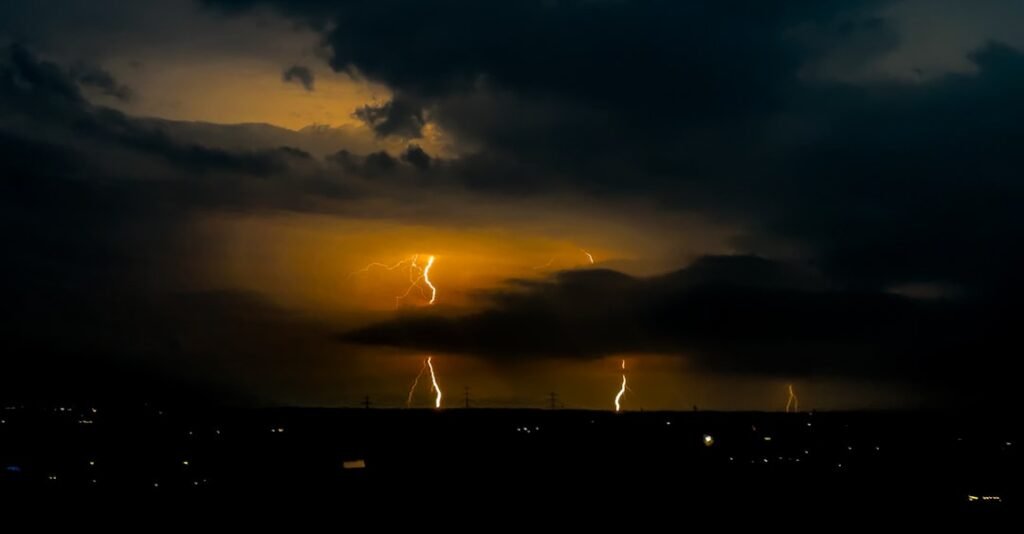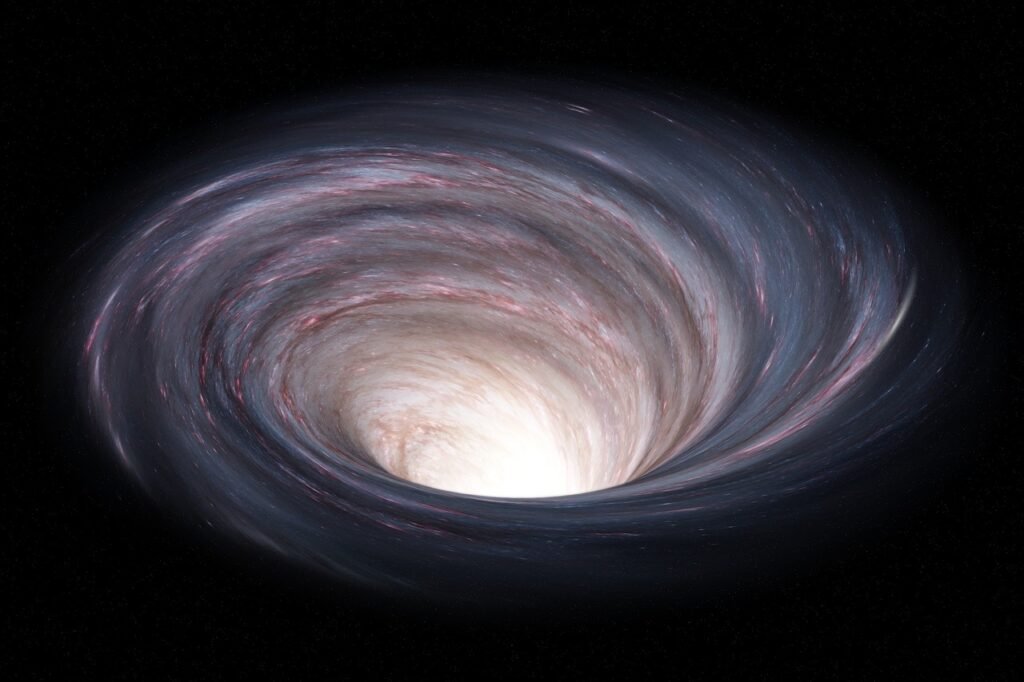Have you ever stood outside on a sweltering summer evening, gazing at distant flashes illuminating the horizon without hearing a single rumble of thunder? Many call this mysterious phenomenon “heat lightning,” assuming those hot, humid nights somehow create their own electrical displays. You might be surprised to learn that what you’re witnessing has nothing to do with heat at all. In fact, heat lightning doesn’t even exist as a unique weather phenomenon. So let’s dive into what’s really happening in those dramatic summer skies and why this age-old myth continues to fool people across the globe.
The Great Heat Lightning Myth

The term “heat lightning” is nothing more than folklore masquerading as science. For generations, people have watched silent flashes dance across summer skies and concluded that extreme heat must be creating electricity in the atmosphere. This belief seems logical enough when you consider the typical conditions. Summer storms tend to hit on notably hot days, some draw a false correlation between this “special” kind of lightning and the heat.
The myth persists because it feels intuitive. Hot air rises, temperatures soar, and suddenly there are flashes in the sky without any accompanying storm sounds. The reason it is referred to as this is because of a MYTH that summertime heat just causes lightning. Yet atmospheric physics doesn’t work this way.
What You’re Really Seeing

Instead, it’s regular lightning from a distant thunderstorm – one so far away that the sound of thunder can’t reach your ears. Those mysterious flashes you observe on clear nights are genuine lightning bolts, just not where you think they are. The actual phenomenon that is sometimes called heat lightning is simply cloud-to-ground lightning that occurs very far away, with thunder that dissipates before it reaches the observer.
Often, mountains, hills, trees or just the curvature of the earth prevent the observer from seeing the actual lightning flash. You’re essentially watching the electrical finale of a distant storm while standing under completely different weather conditions. This creates the illusion that lightning can exist without its typical storm companions.
The Science of Light and Sound

Understanding why you see these flashes without hearing thunder requires grasping the fundamental difference between light and sound speeds. Light travels much farther than sound, especially at night, which is why you can sometimes see lightning from storms up to 100 miles away. Light travels at approximately 186,282 miles per second (299,800 km/s), whereas the speed of sound is only about approximately 1,125 feet per second (343 meters per second).
Thunder, on the other hand, is usually only heard within about 10 to 15 miles of a storm. This creates a massive gap where you can witness lightning but never hear its acoustic signature. Thunder is the sound caused by a nearby flash of lightning and can be heard for a distance of only about 10 miles from the lightning strike.
Why Thunder Disappears

The main reason is that as thunder travels through the atmosphere, it weakens and can be absorbed by terrain, buildings, or other layers of the atmosphere, eventually fading below the threshold of human hearing. Sound doesn’t just travel in straight lines like light does. It gets absorbed, reflected, and refracted by everything in its path.
Thunder is more likely to reflect off the Earth’s surface before it reaches an observer far from the strike, and only the right refraction and reflection of the sound off of the atmosphere will give it the range it needs to be heard far away. The reflection and refraction in the troposphere determines who hears the strike and who doesn’t. Weather conditions, humidity levels, and atmospheric pressure all influence how far thunder can travel before becoming inaudible.
How Far Can You Really See Lightning

The visibility range of lightning will astound you. With storm tops between 45,000 and 60,000 ft, this lightning, provided it is in the upper reaches of the storm, can now be seen from 150 to 200 miles away. Night conditions dramatically enhance this visibility because darkness eliminates competing light sources that might mask distant flashes.
Under optimum conditions, the most intense thunderstorms can be seen at up to 100 miles (160 km) over flat terrain or water when the clouds are illuminated by large lightning discharges. This explains why coastal areas and flat prairies often experience more “heat lightning” sightings. At night, you may be able to see lightning from as far as 100 miles away from the storm, but thunder is typically only heard within 10 miles to 15 miles of a storm.
The Hidden Danger You’re Ignoring

Here’s where the heat lightning myth becomes genuinely dangerous. Just because you can’t hear the thunder doesn’t mean you’re safe. In fact, these silent flashes can signal a storm that’s much closer than it seems – or one that’s moving your way. Many people use the absence of thunder as a safety indicator, assuming they’re beyond the storm’s reach.
Lightning can strike up to 10 miles away from a storm, even under clear, blue skies. This phenomenon, known as a “bolt from the blue,” means that distant lightning could potentially reach your location. While heat lightning itself doesn’t pose a direct threat, it’s often a sign that a thunderstorm is nearby, and it’s always wise to check the radar.
Why Summer Makes It Worse

Typically, isolated thunderstorms that have formed during the day far off on the horizon. These thunderstorms usually form during the mid to late afternoon and last into the early nighttime hours before collapsing. Summer weather patterns create perfect conditions for this illusion because afternoon heat generates scattered thunderstorms that can be widely separated geographically.
On a warm summer night following a scorching hot day, you may see flashes of lightning far away near the horizon line. Summer also brings clearer nights with less atmospheric interference, making distant storms more visible. When there are not a lot of other clouds in the sky, they are easy to see off in the distance. And because they are so far away, you may never get any rain or hear any thunder from that storm.
Breaking Free From Old Weather Folklore

Heat lightning is a classic example of one of those old weather folklore. The name may stick around forever, but scientifically, it’s just lightning seen from afar. Like many weather myths, this one persists because it offers a simple explanation for a complex phenomenon that people regularly observe.
There is no special name that needs to go along with what you are seeing. It is just summertime storms, so call them that. Understanding the real science behind these distant flashes helps us make better safety decisions and appreciate the true power of atmospheric electricity. The next time someone mentions heat lightning, you’ll know they’re describing regular lightning from a thunderstorm that’s simply too distant to hear.
The myth of heat lightning reveals how easily we can misinterpret the natural world around us. Those silent summer flashes aren’t mysterious heat-generated phenomena but rather distant storms putting on an electrical show from far beyond our hearing range. Understanding this difference isn’t just about scientific accuracy – it’s about staying safe when real storms might be closer than they appear. Next time you see those soundless flashes dancing on the horizon, you’ll know exactly what you’re witnessing. What other weather “facts” do you think might actually be myths in disguise?

Hi, I’m Andrew, and I come from India. Experienced content specialist with a passion for writing. My forte includes health and wellness, Travel, Animals, and Nature. A nature nomad, I am obsessed with mountains and love high-altitude trekking. I have been on several Himalayan treks in India including the Everest Base Camp in Nepal, a profound experience.




